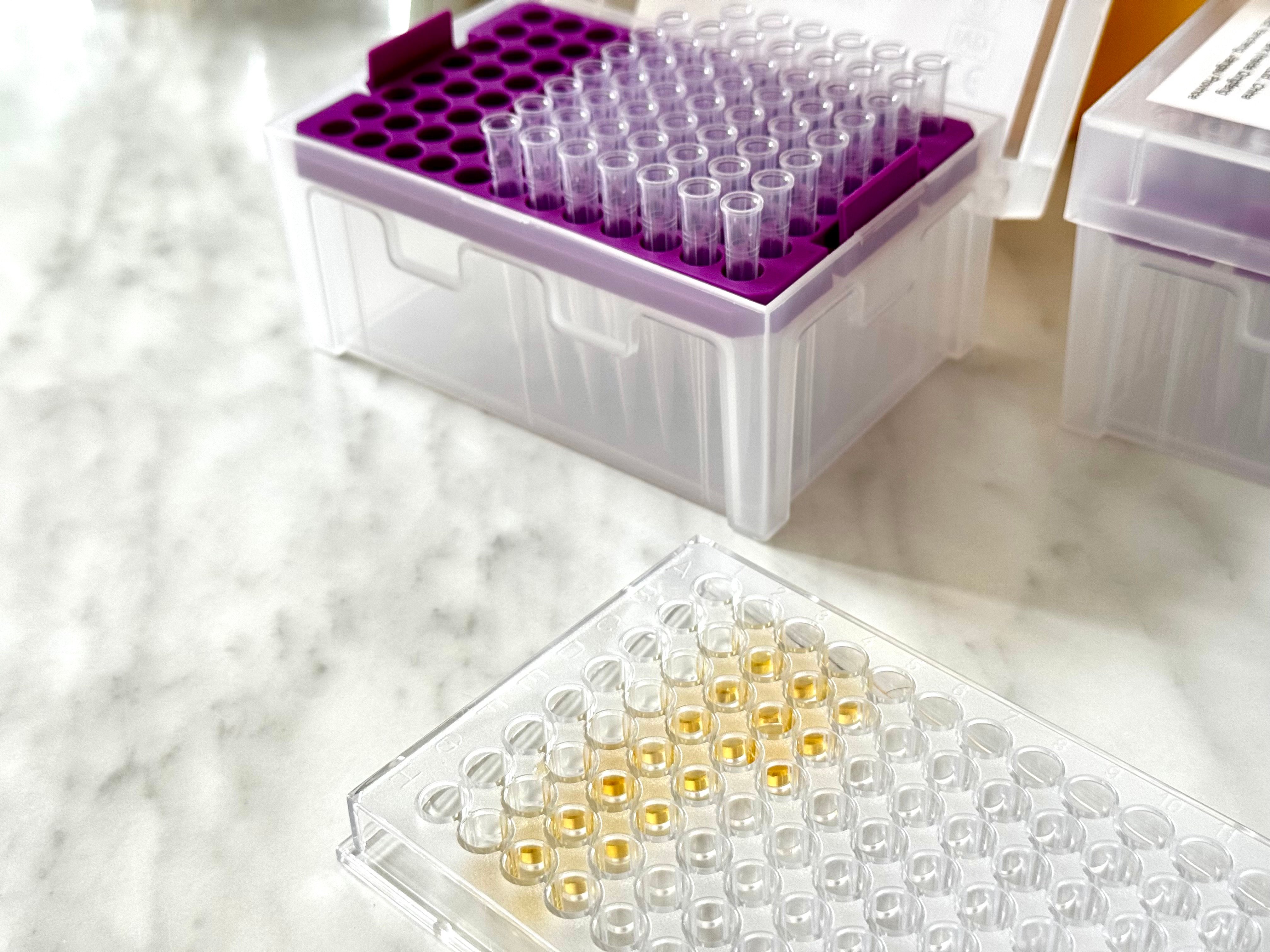
Sharpening Your ELISA Results - Tips for Cleaner Data and Better Signal

Elisa Wells
|
Sharpening Your ELISA Results - Tips for Cleaner Data and Better Signal
3:52
Before You Begin: Key Setup Considerations
1. Verify Your Kit and Controls- Start with fresh reagents and an appropriate positive control.
- Do not mix or substitute components from other kits. Always use kit-matched reagents.
- Pipettes: Regularly calibrate to ensure accurate volumes, especially for small volumes (≤10 µL). For accuracy, avoid pipetting less than 1 µL.
- Plate reader: Verify wavelength calibration and linearity (e.g., OD450 for TMB).
- Briefly spin reagent tubes before opening to collect contents.
- Equilibrate all reagents and materials (plates, buffers, samples) to appropriate temperature before use.
- Prepare reagents fresh immediately before use (except the top, undiluted standard).
- Run a small pilot experiment with standards and a subset of samples to determine the best dilution range, especially if you suspect your analyte is present at high concentrations.
- Use replicate wells for standards and samples to ensure reproducibility and identify anomalies.
- Cover the plate during incubations to prevent evaporation.
- Maintain incubation temperature at 37°C for consistent results.
- Ensure samples are free of precipitates, fibrin strands or bilirubin. Samples that are hemolytic or lipemic might cause inaccurate results due to interfering factors.
Common Problems and Fixes
Problem: High Background
- Inadequate washing: Add more cycles or include a 30-second soak per wash. Avoid air bubbles, which can shield well surfaces, and ensure all liquid is completely removed.
- Expired or contaminated reagents: Yellow stop solution? Discard. TMB Substrate is easily contaminated and should be colorless or light blue until added to plate. Handle carefully, protect from light, and discard if unsure.
- Also ensure:
- Substrate incubation is done in the dark.
- Stop solution is added promptly and read without delay (within 5 minutes).
- Avoid mixing or substituting components from other kits.
Problem: Positive Signal in Negative Controls
- Could indicate cross-contamination (pipetting or washing), non-specific antibody binding, or too high concentrations.
- Solution:
- Use careful pipetting, fresh tips, and avoid reusing tubes.
- Optimize antibody concentrations downward.
- Include thorough blocking and washing steps.
Problem: Weak or No Signal
- Check target expression: is your analyte present at detectable levels?
- Optimize antibody concentrations and incubation times.
- Confirm substrate freshness and that all reagents are at proper temperatures.
- Dilute any samples exceeding the top standard to fit within the curve.
Problem: Irregular Signal Across the Plate
- Place plates on a level surface and maintain consistent temperature and humidity.
- Mix all reagents gently (avoid bubbles or foaming) before pipetting.
- Avoid reusing plate sealers.
- Keep wells consistently covered with liquid throughout the assay.
Signal Drift or Inconsistent Replicates?
- Don’t pause mid-process; once you start, complete without interruption.
- Have all samples, standards, and materials ready.
- Handle wells sequentially and consistently for timing.
Recap:
 Final Thought: Use the Right Tools
Final Thought: Use the Right Tools
- Always use ELISA plates, not tissue culture-treated plates.
- Use affinity-purified, pre-absorbed antibodies when possible.
- Include internal controls and check your standard curve calculations.
- Avoid repeated freeze-thaw cycles.
Need More Help?
If you have any questions or could use a second set of eyes on your ELISA setup or data, don’t hesitate to reach out! Our team is here to help.
Email us at techsupport@avivasysbio.com


